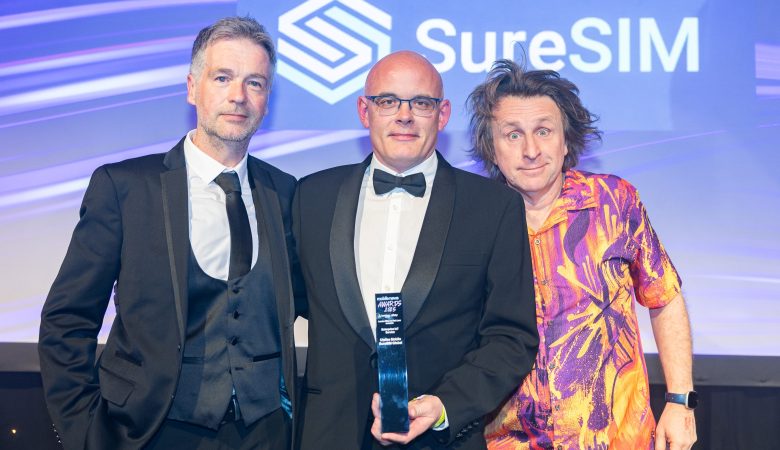Imagine businesses thriving, not just surviving, in today’s fast-paced market. Scott Dylan, of Inc & Co, embodies this. Starting in 2019, he aimed not just for quick wins. His goal was sustained success through growth and toughness.
Under Dylan’s leadership, Inc & Co became a top firm, turning failing businesses around. His strategy focuses on cutting costs and being more efficient. It improves finances and uses new technology. This approach has saved many companies, like a retail chain and a manufacturer, by changing how they work.
But Scott Dylan believes in putting people first. He mentors and leads with fresh ideas, encouraging teams to aim high. This mix of smart planning and caring for people helps companies grow stronger.
In Dylan’s view, e-commerce is more than selling online. It uses data wisely, offers great customer service, and manages stock well. He looks forward to a future where every business decision helps a company do better for longer.
Embracing the Philosophy of Continuous Improvement
To truly embrace continual improvement, it’s vital to create a space where new ideas can grow. An environment should encourage adapting and have everyone aiming for excellence. Making improvement a core business goal means everyone must be committed. It’s about making sure these values become part of the team’s nature.
This approach helps the business keep moving forward. It uses everyone’s ideas and creativity to fuel growth constantly. In today’s fast-paced business world, being adaptable is key to staying ahead. Companies that adapt quickly can keep up with market changes. Innovation is also crucial, but it’s not just about new gadgets. It’s more about finding better ways to solve problems and improve our work.
To make continuous improvement work, it must be part of everything the organisation does. It needs to be a priority from the top down to every team member. This way, improvement isn’t just an extra task—it’s a core part of the company’s identity. This deep integration not only makes operations better but also creates a workplace where everyone works together to find new solutions. This environment is perfect for driving constant innovation and achieving success.
Scott Dylan’s Insights on Enhancing Business Culture
At the heart of thriving companies, enhancing business culture is key, according to Scott Dylan. He believes a strong culture goes beyond policies. It’s about engaging and valuing employees deeply. His work at Inc & Co shows turning businesses around by focusing on employee engagement and efficiency.
Scott Dylan sees creating a supportive environment as crucial. This makes employees feel part of company decisions, boosting motivation. This inclusivity leads to a sense of ownership. It spurs innovation that drives the company forward. Dylan feels valuing employee contributions boosts productivity and their connection to company goals.
Dylan focuses on aligning business strategies with cultural ethics for long-term success. He’s turned around businesses by fostering an engaging culture. From retail revivals to improved manufacturing, a strong culture underpins success and resilience.
For Scott Dylan, a positive and engaged workplace directly impacts business success. His insights offer valuable lessons for leaders wanting to create meaningful change.
The Key Strategies for Driving Organisational Change
For real change in an organisation, some strategies are crucial. Leadership stands out as key. It’s about more than leading; it’s about inspiring and showing a vision that others want to follow. Another important strategy is to empower employees. This gives them the freedom and tools to bring new ideas to life.
Clear communication is essential for successful change. It makes sure everyone understands the goals and can help out. Building skills within teams is also important. It helps employees handle the change smoothly by giving them the skills they need. Recognising and rewarding efforts that move the organisation forward is vital for success.
Regularly checking and adjusting the organisation’s culture is also advised. This helps see the difference between the current culture and what’s wanted. Turning this insight into actions can lower staff leaving and increase their involvement and creativity. Having a unique value proposition might give an edge in today’s standardising market due to tech advances.
Studies say the bigger the culture gap, the more staff might leave or disengage. So, it’s important to have strategies that close this gap well. Aligning leadership, empowering staff, getting feedback, and adjusting plans can lead to strong change. This sets up a culture that’s always getting better.
Continuous Improvement Methods and Tools
In the search for adding value, continuous improvement methods and improvement tools are key. They help shape an organisation’s culture towards better efficiency and effectiveness. Using famous systems like Six Sigma and Lean makes a big difference. Six Sigma is focused on lowering mistakes by following a strict, data-driven plan. It aims for almost no defects. Lean, on the other hand, aims to increase customer value by cutting out unnecessary steps.
There are special tools to help teams find and fix inefficiencies. Value stream mapping lets an organisation see how materials and information flow through to the customer. It’s crucial for spotting delays and wasted effort. Root cause analysis digs into the real reasons behind problems. This way, solutions tackle the true issues, making them more effective for a long time.
The Plan-Do-Check-Act (PDCA) cycle is another essential tool. Known for its simple yet effective approach, the PDCA cycle supports ongoing improvement in a manageable way. Organisations use it to make small, manageable changes step by step. This process lets teams try new things on a small scale, tweak as needed, and then expand the improved process fully.
Using these improvement tools drives companies towards better processes and creates a culture ready for more process enhancement. By consistently applying these methods and tools, businesses achieve not just small improvements but also major, lasting growth.
Leadership and Its Role in Cultivating Improvement
In today’s fast-paced business world, strong leadership is key to cultivating improvement in any organisation. Leaders act as major forces for change, pushing the entire culture towards betterment. They aim to create a vision that matches the main goals of the business while encouraging constant progress.
Leaders play a vital role in creating a place where improvement is always sought. They lead by example, showing their team the value of adaptability and quick responses to market changes. Their decision-making and strategic planning highlight the need for continual growth, positioning them as pillars of any transformation effort.
Besides, understanding the need to handle change gently is what makes a leader effective. They not only bring in new methods but also ensure these changes benefit the whole team. By promoting an atmosphere where people feel safe to give feedback and take considered risks, leaders build a strong, adaptable organisation.
To conclude, leadership is crucial in improving and leading changes within a business. By living out their values, encouraging honest communication, and nurturing an innovative and tough culture, leaders navigate the challenges of change management. This way, they guide their teams to long-lasting achievement.
Team Dynamics and Collaborative Efforts
In today’s world, strong team dynamics and collaborative efforts are crucial. They are the heart of every leading company, like Citi. These companies show that good teamwork and working together can boost success and collective improvement.
Great teamwork starts with using different viewpoints and skills. This approach can lead to brilliant ideas and more effective work. Teams in big companies work together to understand large amounts of data or simplify tough tasks in finance. Their teamwork, which comes from diverse skills and insights, can make a big difference.
For teamwork to be successful, everyone must feel free to share ideas. This kind of environment makes sure everyone is heard and appreciated. It makes the team strong and helps every project succeed even more. Teams get better at working together, which sparks new ideas and solutions.
Building a team that works well together is more than just getting along. It’s about creating a space where everyone wants to and can contribute. This not only improves results but also helps the team grow and learn, keeping the company competitive.
So, companies focusing on team dynamics and collaborative efforts are likely to keep succeeding. This commitment benefits not just the company but also the wider industry.
Measuring Success in a Continuous Improvement Culture
In a continuous improvement culture, setting strong success metrics is key. They guide businesses and show which areas need more work. Each success metric should match the organisation’s goals. This ensures progress contributes well to growth and efficiency.
Performance indicators cover many aspects, like saving costs and improving customer happiness. A key indicator could be cutting down on how long processes take. These metrics let organisations measure their improvement efforts and check the impact of changes.
Using these metrics every day helps make decisions based on data. Everyone sees how their work helps meet the company’s goals. This support keeps the continuous improvement culture alive. Organisations that do this well see big improvements and get ahead in the market.
By focusing on continuous improvement, companies can face current and future challenges better. Being ready for what’s next is crucial in today’s fast-changing world. This approach drives companies to always be improving, staying competitive and strong.
Continuous Improvement: Overcoming Common Challenges
In the journey towards continuous improvement, businesses often face many hurdles. They must be resilient, think strategically, and communicate effectively. A major hurdle is the ‘Culture delta’ (CΔ). It’s the gap between the desired culture of improvement and what employees really see. This gap can affect how engaged employees are, spark innovation, or lead to more people leaving.
Addressing issues like resistance to change or not having enough resources is key. Companies must understand their Culture vision (Cv) well. It’s vital to match this vision with the company’s actual strengths and actions. Doing so helps make the culture of improvement a core part of the company’s work.
Being resilient is crucial in overcoming these challenges. Companies should regularly check their Culture reality (Cr). They can use things like Employee Surveys and Customer Satisfaction Surveys. This makes sure everyone feels the company’s culture vision in all areas. As per research by Bidmon & Knab (2018), business models can both help and hinder this change. So, it’s important to know how they work.
To tackle the challenges of continuous improvement, companies should also think about renewal and reuse. Konietzko et al. suggest making products last longer, using resources better, and reducing waste. This fits perfectly with continuous improvement goals. Encouraging working together through value networks and platforms helps too. This creates a setting where getting better constantly and bouncing back is encouraged.
By recognising these common hurdles and using their strong points well, businesses can foster a culture of constant improvement. This culture will be full of resilience and movement. It will bring ongoing growth and new ideas.
Conclusion
The drive towards continuous improvement shows dedication and innovation. Professionals like Scott Dylan lead the way. This journey doesn’t end but grows and evolves over time.
Leaders and teams that embrace this path prepare for strong growth. They stay ahead in turbulent markets. This commitment is vital for both survival and success.
Using smart technologies leads to big gains, as a McKinsey study shows. Manufacturers embracing AI could see a 122% increase in cash-flow. In contrast, those who wait fall behind.
Intelligent algorithms and planning systems boost efficiency. Scott Dylan highlighted how these innovations reduce processing times. INFORM’s research tells us times can shorten by up to 62%.
This shift in operations marks a move towards substantial growth. It’s not just about surviving; it’s about thriving and reaching new heights.
Continuous improvement requires aligning strategy with practical action. This approach benefits many sectors, from manufacturing to healthcare. It fosters a business environment that always aims to improve.
The goal is to create a resilient and pioneering business world. A world that leads, innovates, and sets new standards.




Pingback: Leveraging Data Analytics in Manchester Startups: Insights from Scott Dylan - Business Talk News